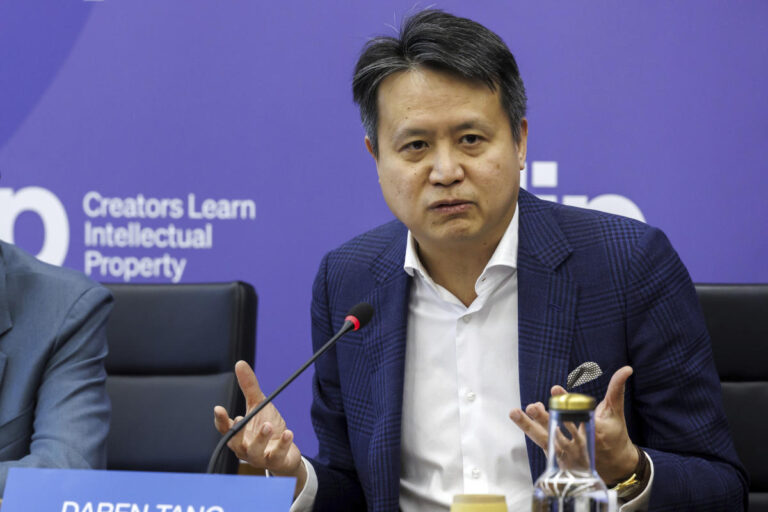GENEVA (AP) — China has filed far more patents for generative AI than any other country, with the United States a distant second, the U.N. intellectual property agency said Wednesday.
The technology has the potential to increase efficiency and speed scientific discovery, but it also raises employment and worker concerns, and is linked to about 54,000 inventions in the decade to 2023, according to a report by the World Intellectual Property Organization (WIPO).
More than a quarter of these inventions emerged in the last year, according to WIPO, a testament to the explosive growth and interest in generative AI since it became widely known to the public in the second half of 2022.
The new patent report is the first of its kind, aiming to track patent applications as a potential indicator of artificial intelligence trends. The report focuses only on generative AI, excluding the broader definition of artificial intelligence, which includes technologies such as facial recognition and self-driving cars.
“WIPO wants to help everyone better understand where this rapidly evolving technology is developing and where it’s headed,” WIPO Director General Darren Tang told reporters.
In the 10 years since 2014, China produced more than 38,200 generative AI inventions, six times as many as the United States, which had about 6,300. Next came South Korea with 4,155, Japan with more than 3,400, and India with 1,350.
GenAI helps users create text, images, music, computer code and other content using tools such as OpenAI’s ChatGPT, Google Gemini and China’s Baidu’s Ernie. The technology is being adopted across many industries, including life sciences, manufacturing, transportation, security and communications.
Some critics worry that GenAI could replace workers in certain occupations or exploit human-created content without fair and adequate compensation to its creators.
As with other types of patent applications, WIPO officials acknowledge that the quantity of GenAI patents is not an indication of quality: In the early stages of a technology, it is difficult to know which patents will have market value or be transformative to society.
“We’ll see how the data and deployment evolves over time,” Tan said.
The United States and China are often seen as rivals in the development of artificial intelligence, but by some measures, American tech companies are leading the way in developing the world’s most cutting-edge AI systems.
“Looking at patents only paints part of the story,” said Nestor Massrey, research manager at Stanford University’s Human-Centered Artificial Intelligence Institute, adding that patent approval rates can vary depending on each country’s laws.
“When you look at the vibrancy of AI — and there are really important questions about who’s putting out the best models and where those models are coming from — it looks like the U.S. is way ahead, at least on that measure,” said Masley, who compiles Stanford University’s annual AI Index, which measures the state of the technology.
This year’s AI Index found that 61 notable machine learning models will come from US-based institutions in 2023, ahead of the European Union’s 21 and China’s 15. France had the most among EU countries with eight.
By another measure, the United States has the most so-called AI-based models, which are large, versatile and trained on huge datasets, including OpenAI’s GPT-4, Anthropic’s Claude 3, Gemini, and Meta’s Llama.
The United States also leads China in private AI investment and number of new AI startups, and China also leads in industrial robotics.
___
Matt O’Brien in Providence, Rhode Island, contributed to this report.
___
Follow AP’s artificial intelligence coverage at https://apnews.com/hub/artificial-intelligence.

